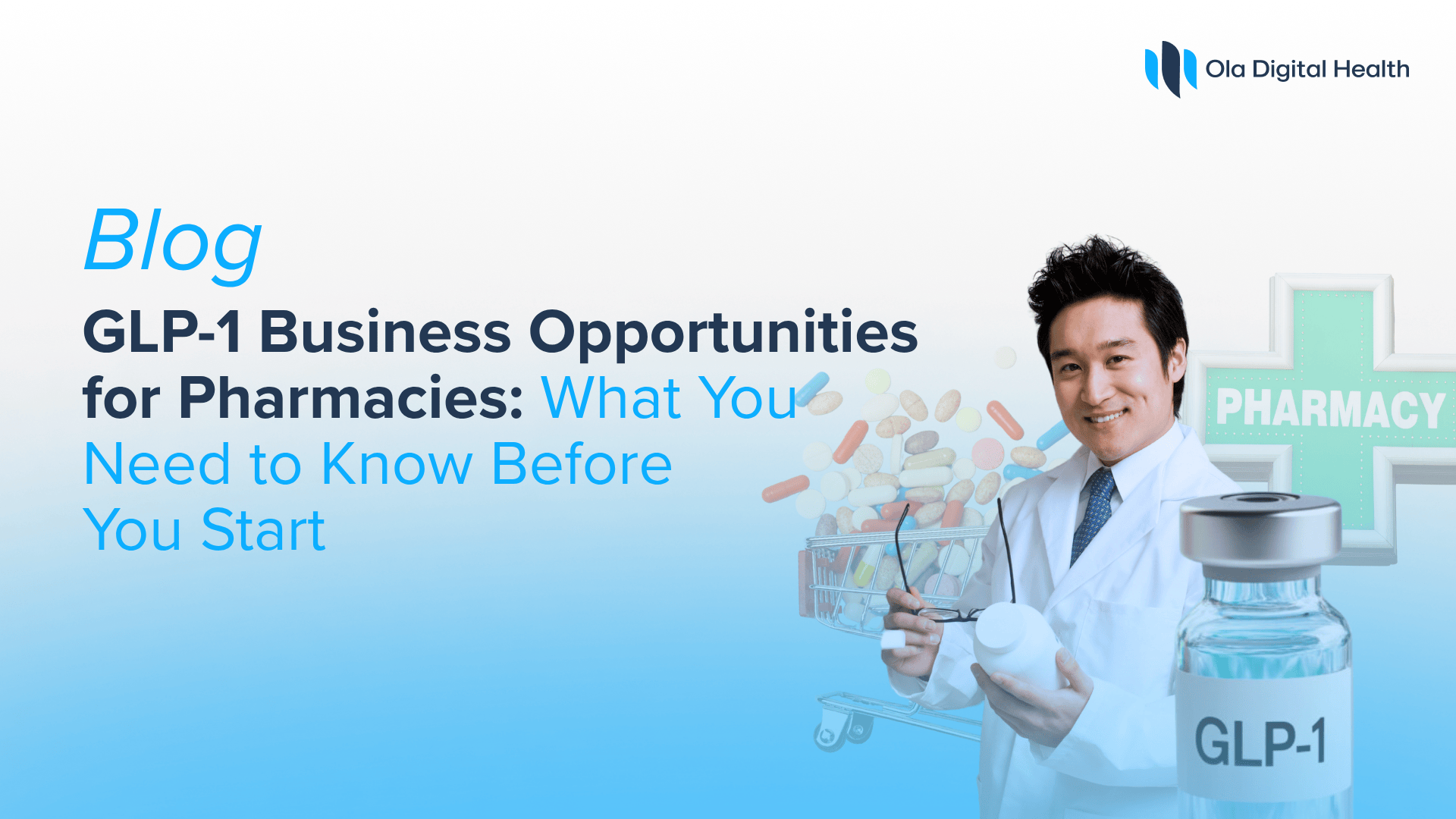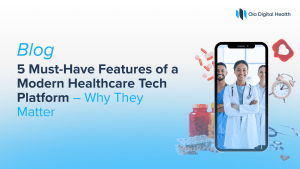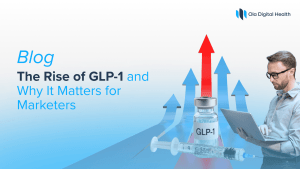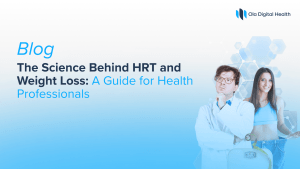A few years ago, if someone walked into a pharmacy asking for a weight loss prescription, chances are the pharmacist would have simply pointed them to the supplement aisle. But 2025 is a completely different world. GLP-1 medications have become one of the most in-demand treatments in healthcare today — and pharmacies are realizing this is more than just a trend. It’s a movement reshaping how Americans think about weight, wellness, and long-term health.
From small-town independent pharmacies to nationwide chains, everyone is exploring how to tap into GLP-1 business opportunities for pharmacies. But it’s not as simple as just “stocking the medication.” The real value comes from building GLP-1 weight loss programs that are medically integrated, patient-centered, and operationally profitable.
So, let’s explore what it really takes — the challenges, logistics, fulfillment, insurance, and telehealth integration — to build a successful, compliant, and future-ready GLP-1 program inside your pharmacy.
The GLP-1 Boom: What’s Fueling It
You’ve seen the headlines. You’ve seen the demand. But the scale of this shift is staggering.
According to Bloomberg, the GLP-1 market could reach $150 billion globally by 2030, driven not just by diabetes care but by the explosive rise in weight management prescriptions. That means there’s never been a better time for pharmacies to expand into the world of medically guided GLP-1 weight loss programs.
But here’s the catch — the opportunity is real only if you can handle it right. The demand for GLP-1s isn’t just about filling prescriptions. It’s about offering an experience that connects medical consultation, follow-up care, and lifestyle management. That’s where pharmacies that think beyond the counter are winning.
1. Understanding the Challenges First
Before diving into profits, it’s important to understand what makes pharmacy GLP-1 services complex.
The first challenge is compliance and workflow. GLP-1 medications such as semaglutide and tirzepatide are prescription-only and require careful patient assessment. Pharmacies cannot simply market or dispense them without valid prescriptions, storage control, and proper documentation.
The second challenge is supply chain reliability. Many pharmacies face inconsistent availability due to global demand. Ensuring that patients can access consistent refills is key to maintaining adherence and trust.
The third big challenge? Patient education. Pharmacists are often the first point of contact. Patients have questions about dosage, side effects, and how GLP-1s interact with their daily lives. Pharmacies that can offer clear guidance (in collaboration with licensed telehealth providers) position themselves as trusted advisors, not just dispensers.
Understanding these hurdles is step one in building a real business strategy — not just riding the hype wave.
2. Operationalizing GLP-1 Weight Loss Programs
Turning GLP-1 business opportunities for pharmacies into consistent revenue requires planning.
A pharmacy’s GLP-1 program can’t be treated as a standalone service. It needs to be part of a broader operational system that includes medical oversight, telehealth integration, and consistent follow-up.
Here’s a simplified structure most successful pharmacy-led programs follow:
Step 1: Partner with Licensed Providers
Work with GLP-1 telehealth partnerships that can prescribe responsibly. This ensures the clinical piece is covered while the pharmacy handles fulfillment.
Step 2: Create a Patient Intake Process
Patients can fill out a short digital form that connects them with a telehealth provider for evaluation. Once approved, the prescription is routed to your pharmacy automatically.
Step 3: Fulfillment and Education
Dispense medication, provide counseling on dosage and lifestyle recommendations, and set refill reminders. This personalized touch builds long-term loyalty.
Step 4: Follow-Up and Monitoring
Set up digital touchpoints — SMS, app notifications, or calls — to track adherence and satisfaction. When patients feel supported, they stick with your program longer.
This operational blueprint turns your pharmacy into a full-service pharmacy weight loss program integration hub — not just a dispenser of medication.
3. Pharmacy Fulfillment: The Heart of the Operation
Once you’ve got the structure in place, it’s time to perfect the operational flow.
Pharmacy fulfillment is the backbone of any GLP-1 weight loss program. Since these medications often require compounding, refrigeration, and strict compliance, your team needs standardized protocols.
Key points to focus on:
- Inventory Management: Track your GLP-1 supply closely. Partner with reputable compounding pharmacies that meet FDA safety standards.
- Cold Chain Storage: Maintain required temperature ranges during transportation and storage to preserve drug efficacy.
- Automated Refills: Use pharmacy software that reminds patients of refill dates and prevents gaps in treatment.
- Consultation Workflow: Train pharmacists to spend 5–10 minutes with every GLP-1 patient explaining medication timing, dosage escalation, and expected results.
This is where many pharmacies shine. When patients feel like they’re being guided — not just sold to — they stay loyal and refer others.
4. Insurance and Cash-Pay Models
Here’s the tricky part: not all insurance plans cover GLP-1s for weight loss. That’s why understanding the financial model is key for profitability.
You can approach this in two ways:
1. Hybrid Model: Offer both insurance and cash-pay options. For patients whose plans don’t cover GLP-1, you can connect them to telehealth programs offering compounded semaglutide at affordable rates.
2. Subscription Model: Some pharmacies are building monthly subscription programs where patients pay a flat fee that includes medication, counseling, and telehealth follow-ups.
Cash-pay programs can be surprisingly profitable, especially when combined with add-on services like nutrition consults or supplement sales.
Transparency is everything. Always help patients understand their options clearly, so they can make informed decisions about their care and cost.
5. Integrating Telehealth Partnerships: Your Game Changer
This is where it all comes together.
Pharmacies that integrate GLP-1 telehealth partnerships are unlocking a completely new level of scalability.
Here’s why:
- No More Guesswork: You get a steady inflow of patients pre-qualified and prescribed by licensed clinicians.
- Automation: Telehealth platforms handle intake, consent, and medical evaluation, freeing your staff to focus on fulfillment and customer experience.
- Data Flow: Prescriptions, progress updates, and refills are synced automatically.
- Compliance: The telehealth provider handles regulatory oversight, ensuring your operations stay audit-ready.
This integrated model not only increases your volume but also reduces risk. It’s the most efficient way to build pharmacy GLP-1 services that run smoothly while staying compliant.
6. Marketing and Community Engagement
To make your GLP-1 program successful, people need to know it exists. That means smart, educational, and compliant marketing.
Create simple content like:
- Blog posts explaining how pharmacies can offer GLP-1 treatments safely.
- Flyers or digital campaigns highlighting that your pharmacy now provides “medical-grade weight loss support.”
- Educational webinars or short videos co-hosted with your telehealth partner to build awareness.
Remember: patients are already curious. Your job is to educate them responsibly. Transparency always wins over hype.
7. Measuring Profitability: The Numbers That Matter
Pharmacies that implement GLP-1 programs correctly can build steady, recurring revenue streams.
Here’s a quick example:
If your pharmacy enrolls 200 patients into a monthly weight loss subscription at $200 each (medication + consultation + support), that’s $40,000 in monthly revenue. Over time, as word spreads, this can easily scale with minimal additional costs.
Combine that with product upsells — supplements, glucose monitors, lifestyle kits — and your GLP-1 weight loss program becomes a reliable growth channel.
8. According to…
According to a 2024 report by the American Pharmacists Association, pharmacies that expanded into chronic disease management and medically supervised programs like GLP-1 therapies saw a 22% increase in recurring revenue within the first year. This demonstrates how pharmacies are no longer just dispensers — they are becoming healthcare hubs.
That’s exactly where the opportunity lies.
Final Takeaway: The Future of Pharmacies Is Integrated and Intelligent
GLP-1 medications have changed the landscape of modern health. But the real innovation is how pharmacies are redefining their role — from filling prescriptions to leading patient outcomes.
When you combine operational efficiency, telehealth integration, and patient education, your pharmacy becomes part of a long-term wellness journey, not just a one-time transaction.
This shift isn’t about chasing trends. It’s about building sustainable healthcare businesses that put patient experience and profitability on the same track.
If you’re exploring how pharmacies can offer GLP-1 treatments without overhauling your infrastructure, it’s time to think about partnerships — not just products.
Partnering for the Future
At Ola Digital Health, we help pharmacies launch and scale GLP-1 weight loss programs through full telehealth integration, provider networks, and pharmacy fulfillment support. Our turnkey systems make it easy to go live fast, stay compliant, and start serving patients nationwide.
If you’re ready to explore GLP-1 business opportunities for pharmacies, we’d love to connect.
Schedule a call with our expert today or Get in touch. to see how we can help your pharmacy become the next leader in medical-grade weight loss care.










